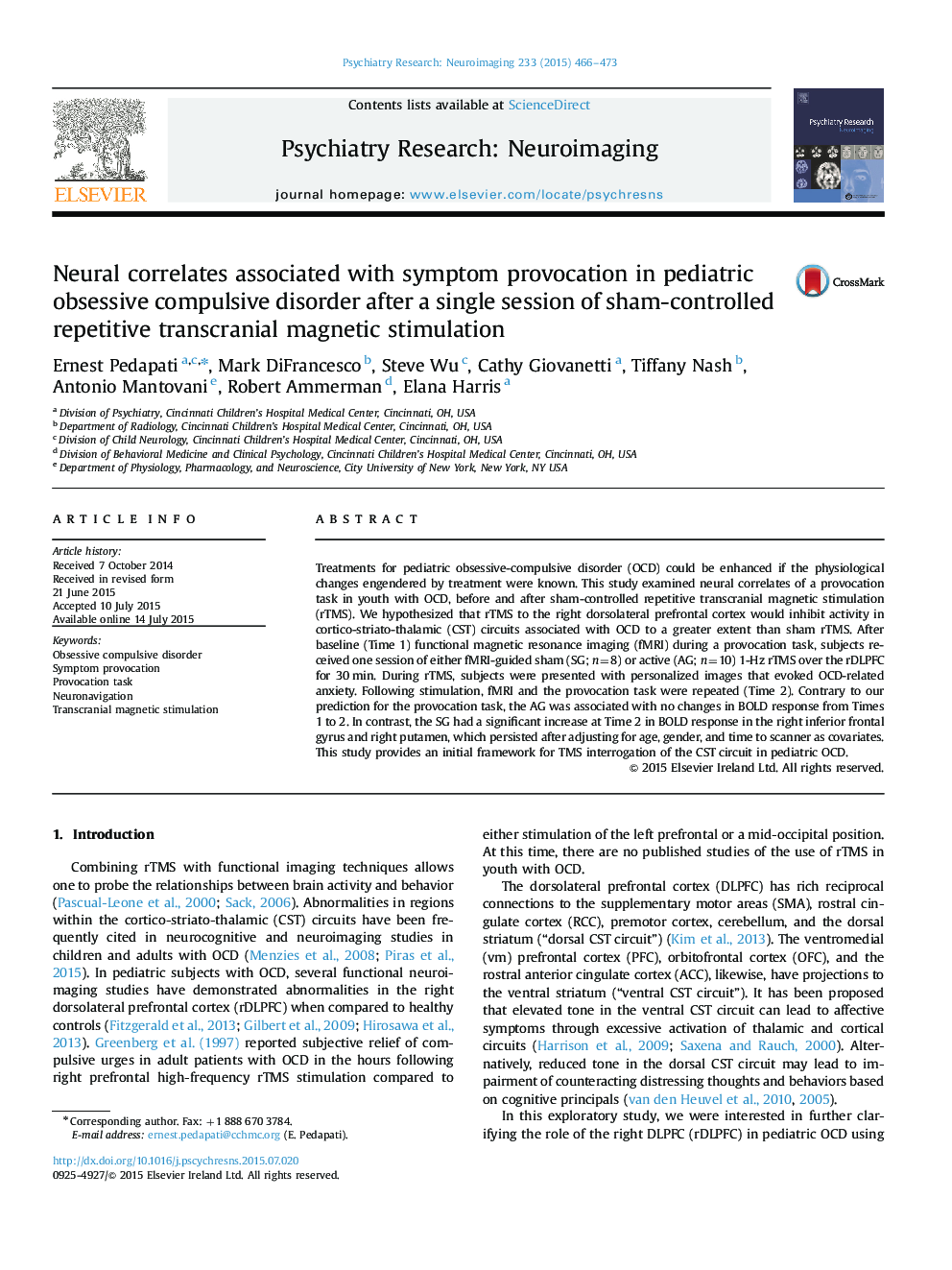| کد مقاله | کد نشریه | سال انتشار | مقاله انگلیسی | نسخه تمام متن |
|---|---|---|---|---|
| 334737 | 546653 | 2015 | 8 صفحه PDF | دانلود رایگان |
• Sham or active rTMS applied in pediatric OCD with pre- and post-fMRI provocation task
• During rTMS, subjects were exposed to individualized provocative stimuli
• No changes in BOLD response after active rTMS, pre- and post-fMRI
• Active rTMS associated with a failure to activate CST circuits on repeat provocation
• We report neural correlates and initial parameters useful for future TMS studies of pediatric OCD
Treatments for pediatric obsessive-compulsive disorder (OCD) could be enhanced if the physiological changes engendered by treatment were known. This study examined neural correlates of a provocation task in youth with OCD, before and after sham-controlled repetitive transcranial magnetic stimulation (rTMS). We hypothesized that rTMS to the right dorsolateral prefrontal cortex would inhibit activity in cortico-striato-thalamic (CST) circuits associated with OCD to a greater extent than sham rTMS. After baseline (Time 1) functional magnetic resonance imaging (fMRI) during a provocation task, subjects received one session of either fMRI-guided sham (SG; n=8) or active (AG; n=10) 1-Hz rTMS over the rDLPFC for 30 min. During rTMS, subjects were presented with personalized images that evoked OCD-related anxiety. Following stimulation, fMRI and the provocation task were repeated (Time 2). Contrary to our prediction for the provocation task, the AG was associated with no changes in BOLD response from Times 1 to 2. In contrast, the SG had a significant increase at Time 2 in BOLD response in the right inferior frontal gyrus and right putamen, which persisted after adjusting for age, gender, and time to scanner as covariates. This study provides an initial framework for TMS interrogation of the CST circuit in pediatric OCD.
Journal: Psychiatry Research: Neuroimaging - Volume 233, Issue 3, 30 September 2015, Pages 466–473
